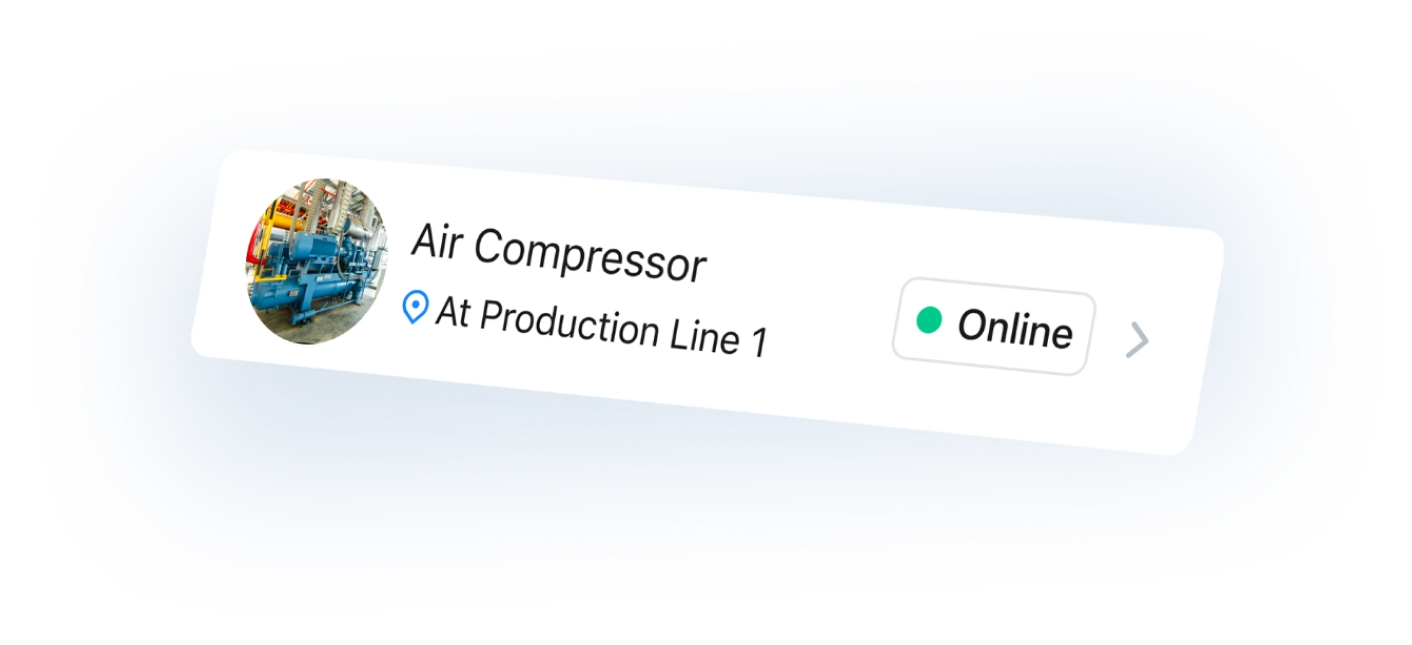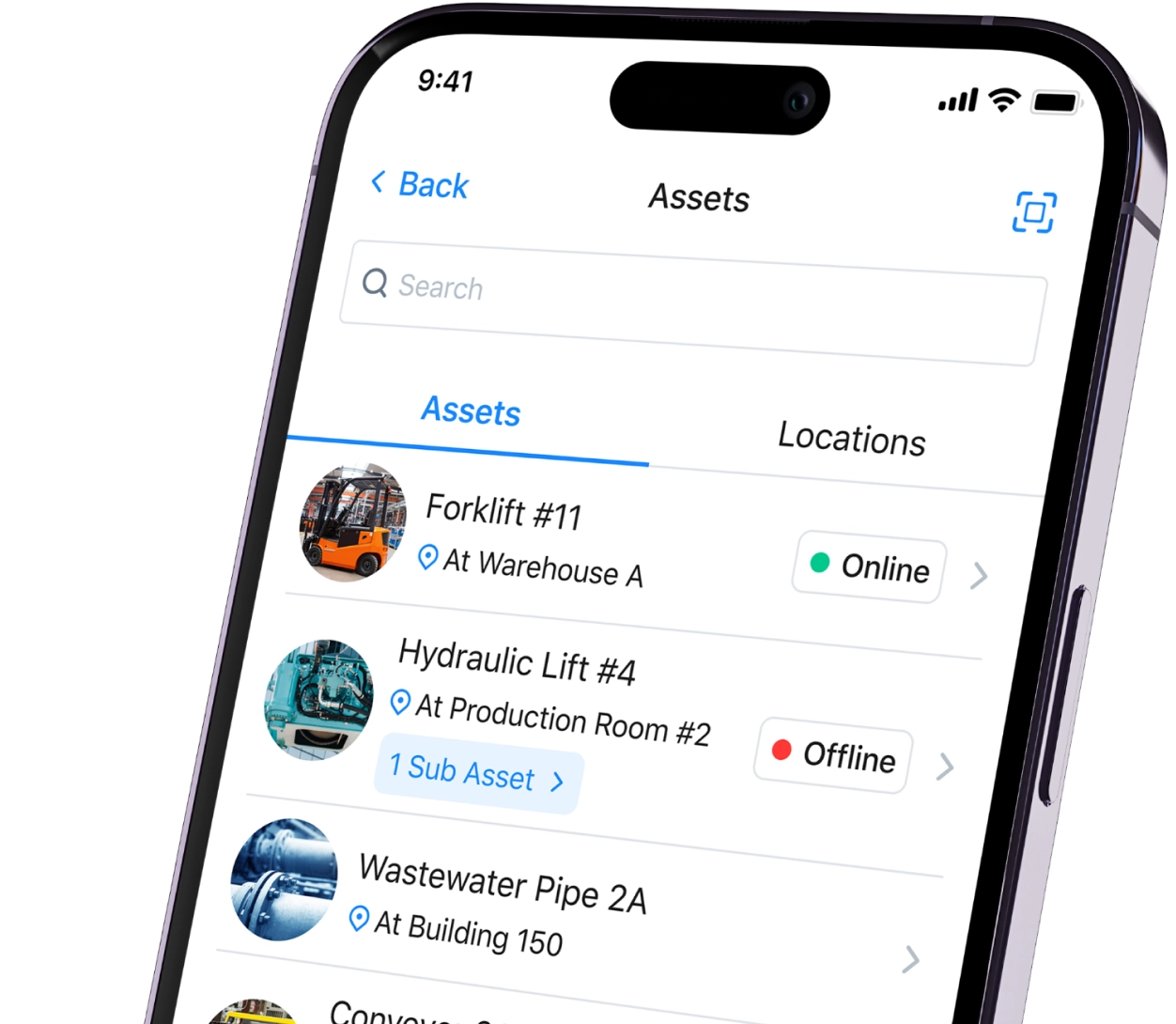Building occupants of course expect property owners and managers to provide comfortable living and working environments. But most people have no clue about the behind-the-scenes work required to meet these expectations.
Beyond performing emergency fixes, property maintenance teams routinely inspect, repair, and replace equipment parts to keep assets running. On any given day, workers clear snow from walkways, change heating, ventilation, and air conditioning (HVAC) filters, and conduct preventive maintenance (PM) activities to keep everything running smoothly.
The best maintenance teams go unnoticed because they do such a good job of preventing major breakdowns, inconveniences, and safety hazards from occurring with proactive maintenance. However, just because it goes unseen doesn't mean it's easy.
Effective building maintenance requires a careful, deliberate approach to properly manage schedules and maximize resources.
Here's what that looks like in practice, plus tips for building a maintenance strategy that actually works.
Key takeaways
- Building maintenance encompasses all tasks required to keep a facility safe, functional, and comfortable, ranging from routine cleaning to complex system repairs.
- A proactive approach is more effective and cost-efficient than a reactive one, as it helps prevent major breakdowns and extends asset life.
- Using a Computerized Maintenance Management System (CMMS) like MaintainX streamlines maintenance management by organizing work orders, tracking inventory, and providing data for better decision-making.
- Effective building maintenance protects property value, ensures occupant safety, reduces operational costs, and supports regulatory compliance across all industries.
What is building maintenance?
At its core, building maintenance aims to preserve a safe, functional environment for occupants while protecting asset value. This includes routine tasks like cleaning and landscaping, as well as complex work like electrical system maintenance and HVAC servicing. Maintenance teams often manage these tasks through CMMS software for better work order coordination.
Of course, building maintenance isn't only beneficial to tenants. Building owners maximize the resale value of their properties by keeping all assets in good working condition. Depending on the type of property, it requires a "Jack or Jill of all trades" or several workers with varying technical specializations to keep things in order.
Examples of building maintenance
For maintenance managers overseeing facility maintenance operations, typical building maintenance activities include:
- Preventive maintenance tasks: HVAC filter replacements, roof inspections, and utility system checks
- Facility management duties: Landscaping, outdoor lighting inspections, and parking lot maintenance
- Safety compliance: Fire alarm servicing, door/window alarm system testing, and emergency equipment checks
- Reactive maintenance: Emergency asset repairs and system restoration
- Seasonal tasks: Snow removal, gutter cleaning, and winter damage assessments
Two types of building maintenance
Although the work varies, building maintenance falls into two categories.
Preventive maintenance
As the name suggests, preventive maintenance tasks (PM) aim to prevent building damage and retain structural integrity. They are routine tasks that protect a building from decay, preserve its functionality, and enhance its durability.
PM also includes sustainable preventive measures during the building's design and construction to withstand storms, floods, and other calamities.
Some examples include inspecting roofs, clearing drains and gutters, and washing floors. Others include garbage removal, and utility system inspections.
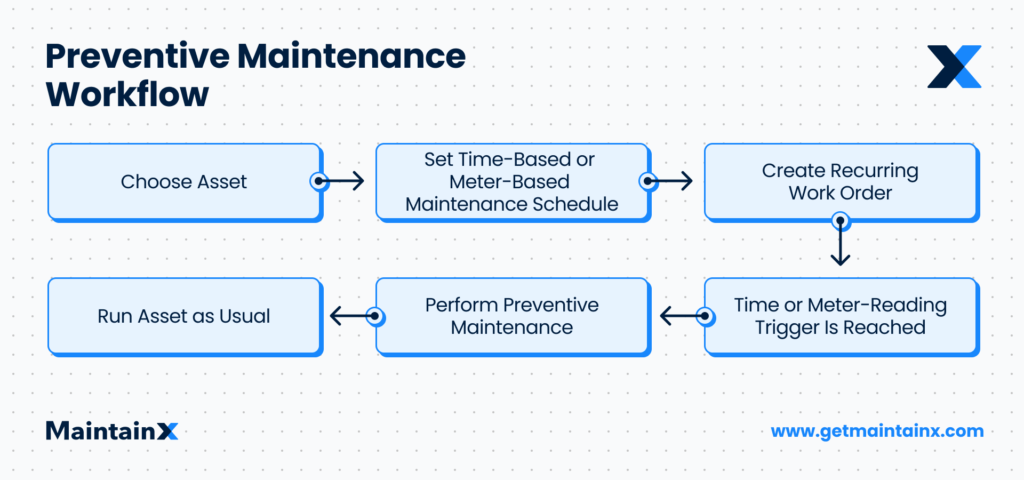
Corrective maintenance
These are activities intended to restore the functionality and comfort of a building. Managers need to have a corrective maintenance strategy in place, as it's impossible to prevent damage or decay completely. Plus, corrective maintenance ensures everything is back in operation as soon as possible.
Some examples include replacing broken windows, repairing disconnected electrical fixtures, and emergency plumbing repairs.
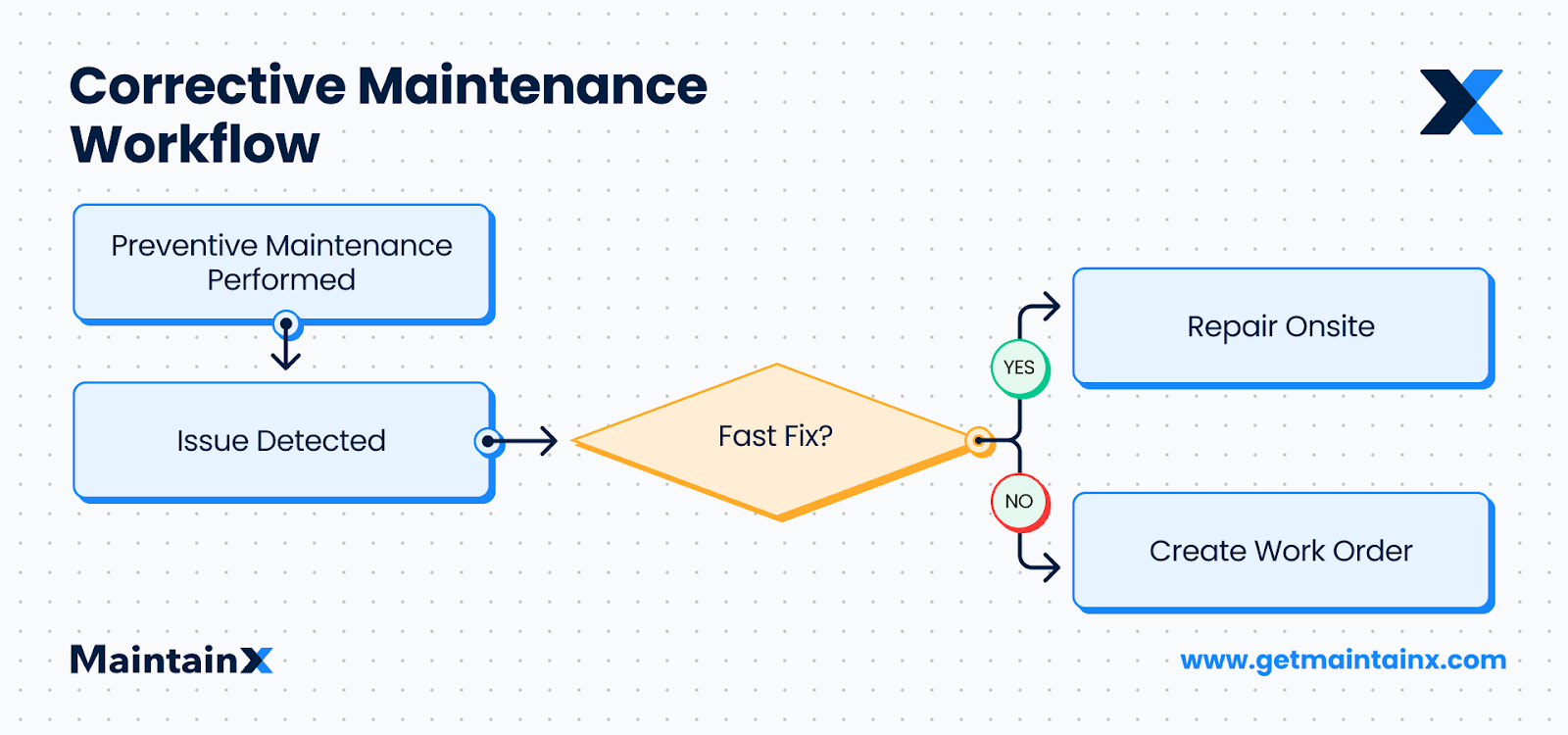
Benefits of building maintenance
Smart building maintenance pays off in three big ways: safer environments, lower costs, and equipment that lasts longer. Teams that plan ahead instead of just fixing problems save serious money and headaches.
Financial benefits
- Cost savings: PM catches small issues before they become expensive emergency repairs
- Extended asset lifespan: Consistent facility maintenance preserves equipment condition and maximizes operational life, delaying costly replacements
- Higher property value: Well-maintained buildings retain market value and attract quality tenants
Operational benefits
- Increased safety: Regular inspections of fire alarms, electrical systems, and structural components reduce accident risk in manufacturing and industrial settings
- Improved occupant satisfaction: Clean, functional environments boost tenant retention and employee productivity
Industries that practice building maintenance
By nature, building maintenance is a critical function across various industries. Every business that operates in a building needs some kind of maintenance plan.
Examples of industries where building maintenance is a priority include:
- Manufacturing: Factories and plants must maintain both their assets and the buildings housing them to support operations and meet safety regulations.
- Housing: Residential facilities need maintenance for both indoor and outdoor areas. Landlords or housing companies must organize or conduct inspections, maintenance, and repairs to ensure everything is in good working condition.
- Retail: Businesses, malls, shopping centers, and more must ensure they can handle high volumes of traffic while remaining presentable and clean.
- Food services: Restaurants and fast-food spots must maintain their buildings similar to retail spaces, with the added difficulty of food safety and increased systems maintenance.
- Education: From preschool to universities, teachers and students rely on well-maintained buildings and working systems to enable comfortable learning environments.
- Healthcare: Hospitals, doctor's offices, emergency rooms, and specialists all need comfortable, reliable spaces to look after patients.
- Industrial facilities: Warehouses, factories, processing plants, and other industrial facilities must maintain both the buildings and the assets housed in them.
Certifications and training for building maintenance workers
Workers have several options to grow their skills and advance their careers in building maintenance. Training and certification programs worth considering include:
Heating, ventilation, and air conditioning certification
There are various training and certification paths for HVAC work, including trade school programs, apprenticeships via construction and trade associations, and third-party certification bodies.
For example, the National Association of Home Builders and the Associated Builders and Contractors offer apprenticeships that help maintenance workers earn HVAC certifications.
Building systems maintenance certification
This is a wide-ranging certification that covers plumbing, HVAC systems, water treatment, and efficient energy management. BOMI International has certificate and credential programs for workers who deal with building systems.
Building operator certification
The building operator certification covers areas including HVAC, control point management, electrical distribution, and energy management. This training is often regionally delivered by local agencies or nonprofits.
Other institutions, such as the International Facilities Management Association (IFMA), offer several training programs for building maintenance workers.
How to improve your building maintenance management
Modern maintenance managers need strategic approaches to handle building maintenance more effectively.
Start with preventive maintenance scheduling
The most important step for maintenance managers is creating a systematic PM program. This shift from reactive to proactive maintenance helps control building maintenance costs and reduce unexpected failures.
Key implementation steps:
- Audit current assets: Document all building systems and equipment
- Prioritize critical systems: Focus on HVAC, electrical, and safety systems first
- Set maintenance schedules: Use manufacturer recommendations and historical data
Deploy work order software
Facility maintenance takes solid organization.
CMMS software like MaintainX centralizes your maintenance program, helping maintenance managers schedule PM based on workload insights, create digital SOPs and checklists, and generate emergency work orders for unexpected issues.
Optimize your inventory management
Beyond good instructions and scheduling, your teams need the right parts to get the job done. Good software can really help with inventory management, too.
With MaintainX, maintenance managers create automated low-quantity alerts that notify teams when stock falls below certain thresholds. The system also generates purchase orders automatically and helps teams manage all vendor data in one system. This approach ensures facilities never stock out of crucial parts.
Read: Construction equipment maintenance checklist
Analyze and report on maintenance activities
Successful maintenance work requires more than just detailed planning at the start. You'll need to keep tweaking your approach.
Track the numbers that matter—they'll show you exactly where to improve. MaintainX helps teams do this by providing a powerful reporting module. Maintenance managers can create custom dashboards to generate at-a-glance insights into important metrics, identifying areas for improvement.
How MaintainX empowers building maintenance teams
Property owners and managers can benefit from adding a CMMS like MaintainX to their maintenance strategy, whether they have internal maintenance teams or rely on outside vendors. Use MaintainX to:
- Automatically assign work to technicians
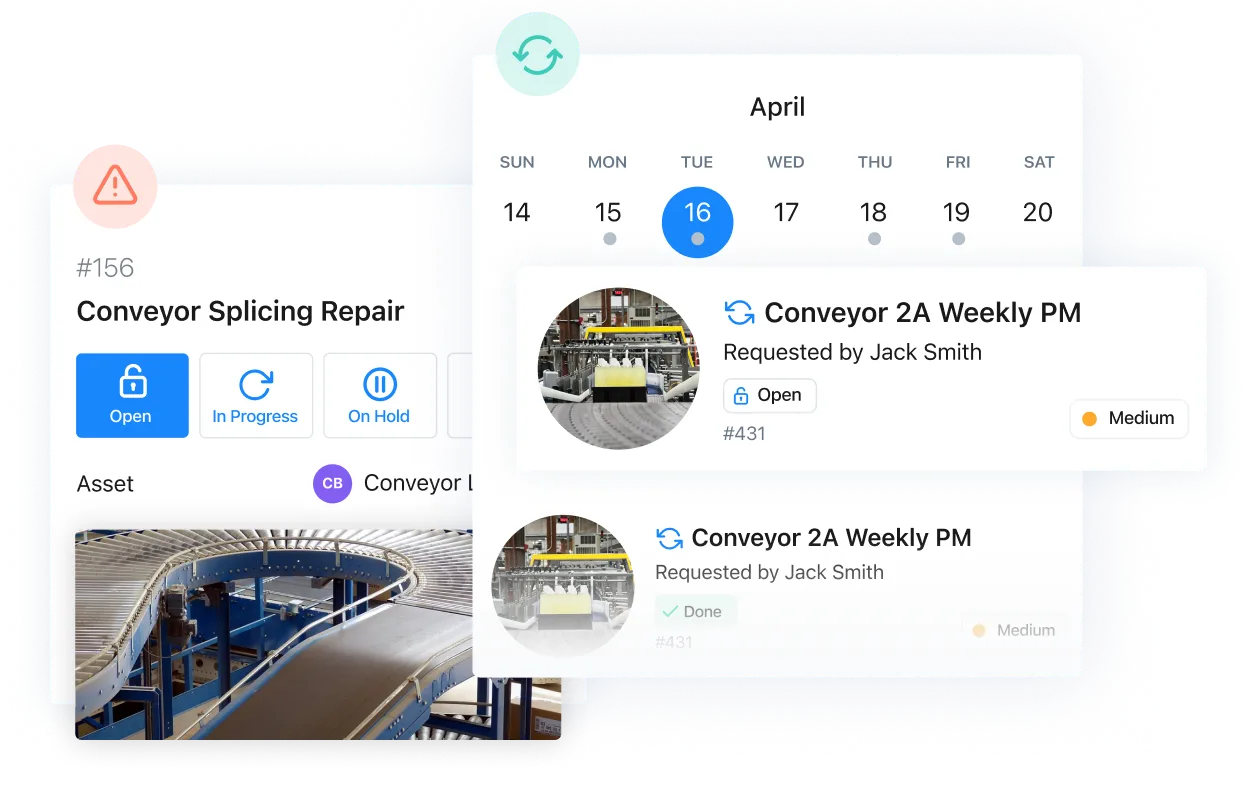
- Create and attach digital standard operating procedures
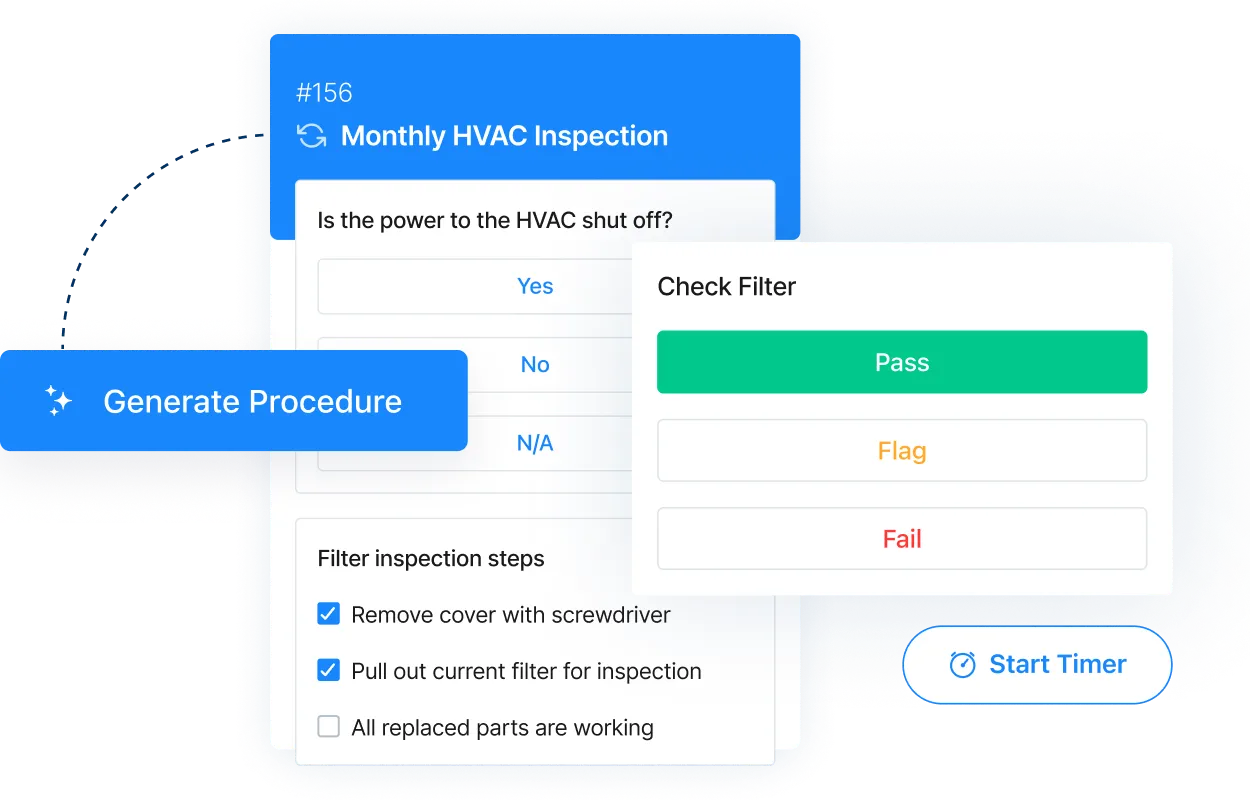
- See accurate reporting on your team's maintenance work
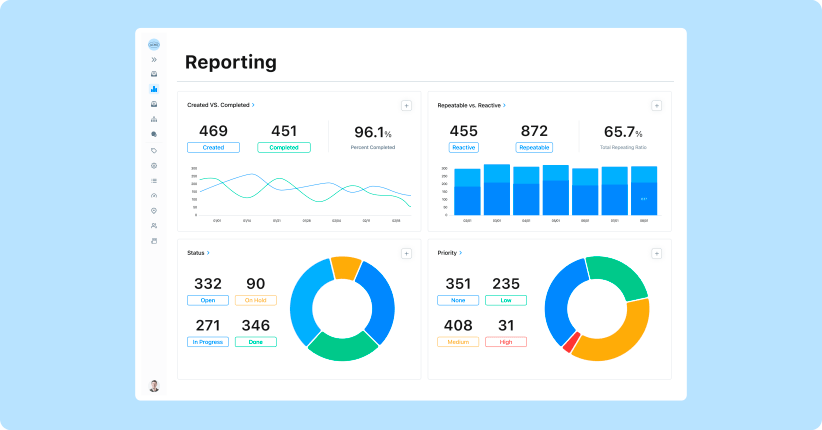
We built MaintainX specifically for maintenance teams who manage complex facilities and high-value equipment. These pros need platforms that bring work orders, asset data, and predictive insights together in one place.
Sign up for free to see how MaintainX can reduce unplanned downtime while streamlining maintenance management across all your facilities.
Building maintenance FAQs
Maintenance managers typically use four maintenance strategies: Preventive (scheduled tasks to prevent failures), corrective (repairs after equipment failure, otherwise known as reactive), condition-based (maintenance triggered by real-time equipment conditions), and predictive (using sensors and data analytics to predict failures).
Building maintenance offers career growth for maintenance technicians in manufacturing and industrial settings. With the increasing complexity of facility management systems and growing demand for skilled CMMS administrators, professionals can advance to maintenance supervisor, facility manager, or regional maintenance director roles with competitive salaries.
In manufacturing environments, building maintenance engineers keep critical facility systems operational. They manage equipment like industrial HVAC systems, compressed air networks, electrical distribution, and water treatment systems, all essential for preventing unplanned downtime that costs thousands per hour.
See MaintainX in action




